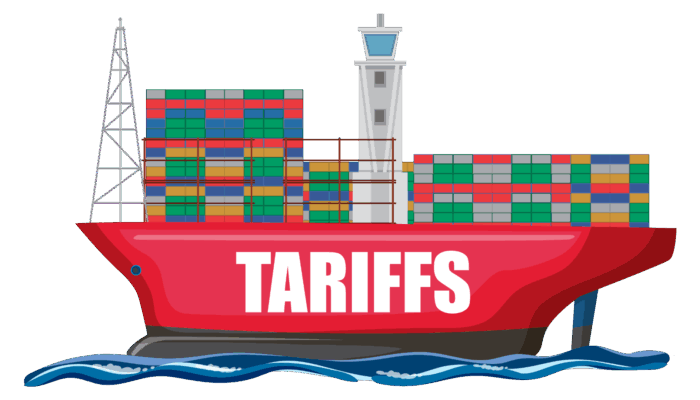In peak season, keeping your site online is the bare minimum. True readiness comes from ensuring end-to-end performance. Across your entire order (and inventory) lifecycle. From seeing what’s in stock, clicking “buy,” to the second a customer’s order is shipped.
That level of performance depends on having technology that can scale. Without breaking under the pressure of huge spikes in order volumes. During peak season, order volumes can surge unexpectedly. Supply chain conditions can change overnight. And customer expectations for speed and accuracy remain high.
A peak-ready Order Management System (OMS) should:
- Show what’s in stock in real-time, no latency on the PLP or PDP
- Minimize click-to-ship time, speeding up the window between order placement and fulfillment commencing
- Reduce oversells and cancellations with real-time inventory updates (no cached data)
- Orchestrate seamlessly between your e-commerce platform, ERP, WMS, and 3PL providers
- Scale automatically to handle huge surges. In API calls, inventory updates, and fulfillment requests
Results Driven by Peak-Ready Technology
In 2024, Fluent Order Management customers achieved exceptional results during peak season, including:
- 100% uptime for the entirety of peak (again)
- 85% year-on-year growth in order volumes
- Millions of peak delivery promises fulfilled without delay
- Billions of inventory updates processed in real time
- Tens of billions of API calls handled without performance degradation
These results are not luck. They’re the outcome of deliberate planning and an OMS that can handle extreme spikes in demand.
Having a peak-ready OMS that can handle flash sales and extreme order volumes is one thing. To be in your best shape for the season, you also need careful planning and rigorous testing across your entire tech stack and retail operations. Every element must be ready to perform flawlessly when the pressure is on.
Step 1: Analyze Traffic and Demand Forecasts
That starts with a detailed forecast.
- Review historical data: Look at past peak season inventory needs. Order volumes, web traffic, and fulfillment rates.
- Identify key spikes: Don’t just plan for the busiest day. Find the busiest hour and even the busiest minute.
- Review marketing activity: Promotions, flash sales, and campaigns can dramatically change order patterns.
- Understand fulfillment capacity: Know exactly how many orders your warehouses and 3PLs can process per hour.
Step 2: Review Operational Readiness
Scalable technology is only one piece of the puzzle. People and processes matter just as much.
- Map the customer journey: From displaying estimated delivery dates to sending order confirmations. Shipping notifications and exception updates.
- Train customer service teams: Ensure they can confidently handle operational issues. Delays, oversells, or routing changes, etc.
- Plan staffing increases: Seasonal surges in order volume often require more staff in warehouses, customer service, and logistics.
- Onboard early: Make sure temporary staff have access and training. Well before peak starts.
Step 3: Define Escalation Paths and Contingencies
When problems arise, speed matters. Clearly define who handles each type of issue that might arise:
- Dependent system plans: Be ready to respond if a key platform, such as an ERP, WMS, or payment gateway, fails. Have a clear escalation path ready for all possible events. Marketplace integration errors, delayed carrier tracking updates, pricing and promotion misconfigurations, etc.
- Fallback processes: Have routing rules ready to send orders to alternative locations. In case one site goes down.
Step 4: Performance Test Your Tech Stack
Testing should replicate real-world peak conditions as closely as possible. Across every system that supports your retail operations. From your e-commerce site and payment gateway to your OMS, ERP, WMS and 3PL connections.
Two main approaches:
- Isolated system testing: Use load generation tools to test individual systems in isolation. For example, hitting APIs directly for inventory updates, payment authorizations, or carrier tracking. Without routing through other systems to identify where performance starts to degrade.
- End-to-end testing: Simulate a complete customer journey. From placing an order on your ecommerce site or marketplace. Through middleware and integrations, into the OMS, ERP, WMS, and on to your 3PL or carrier. This approach helps surface bottlenecks. Specifically, ones that only appear when multiple systems are interacting under heavy load.
Best practices:
- Use realistic, consistent data across all systems. So that routing, pricing, promotions, and inventory behave exactly as they would in production.
- Test synchronous integrations that directly affect customer experience. Such as stock availability, delivery promises, and payment authorizations.
- Benchmark key KPIs:
- Calls per second/minute
- API latency
- Order creation speed
- Fulfillment completion rates
- Payment processing times
- Include extreme load scenarios. Such as hundreds of thousands of orders. Or millions of inventory updates within short timeframes. This ensures your entire stack can flex without failure.
Step 5: Monitor and Optimize
Testing is only valuable if you act on the results. And those results should cover every system in your retail tech stack.
- Identify hotspots: Look for slow workflows, high-latency integrations. Or failures in key touch points. Such as payment authorizations, marketplace updates, carrier tracking, and customer notifications. Anywhere delays could impact the customer experience.
- Remove bottlenecks: This might involve adjusting API call frequencies. Fine-tuning integration timing or optimizing database performance. As well as reconfiguring routing rules, or simplifying workflows between platforms.
- Retest: Validate that any changes deliver measurable improvements. Ensure they don’t introduce new issues elsewhere in the stack.
Step 6: Prepare for Live Peak Operations
Once peak begins, operational discipline and visibility are essential.
- Implement a change freeze: Avoid non-critical deployments during peak season.
- Maintain communication channels: Ensure escalation paths are monitored 24/7. Across all time zones, if necessary.
- Share incident updates: Keep internal teams and customers informed about issues and resolutions.
The Backbone of Peak Performance
Peak season success doesn’t happen by chance. It comes from planning, testing, and aligning your people, processes, and technology. At the core is a scalable OMS. One that can already handle sudden spikes in demand, at all times. Process millions of inventory updates in real time. Route orders across multiple channels and fulfillment locations. When your OMS can flex under pressure, it becomes the backbone of a smooth peak season.
If you want to learn more about how Fluent Order Management can help you achieve peak season success, contact us today.



